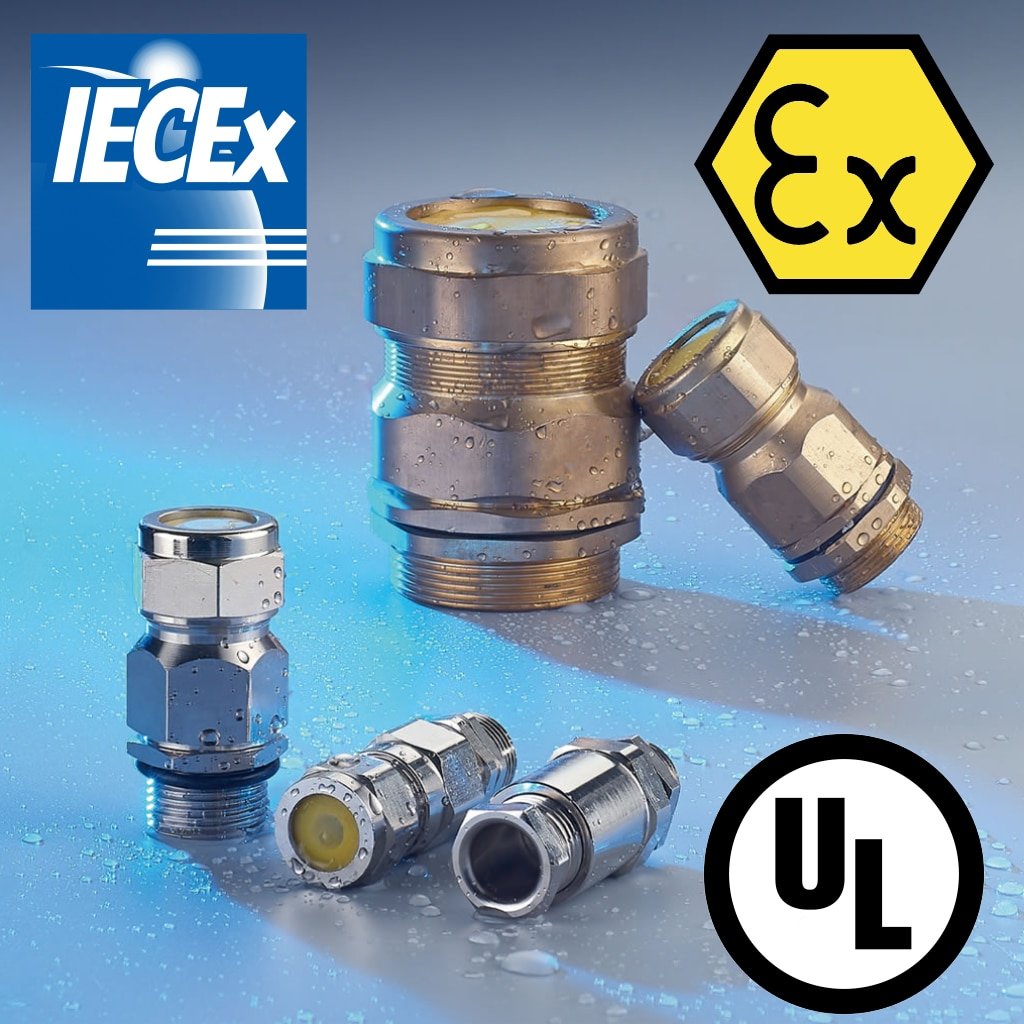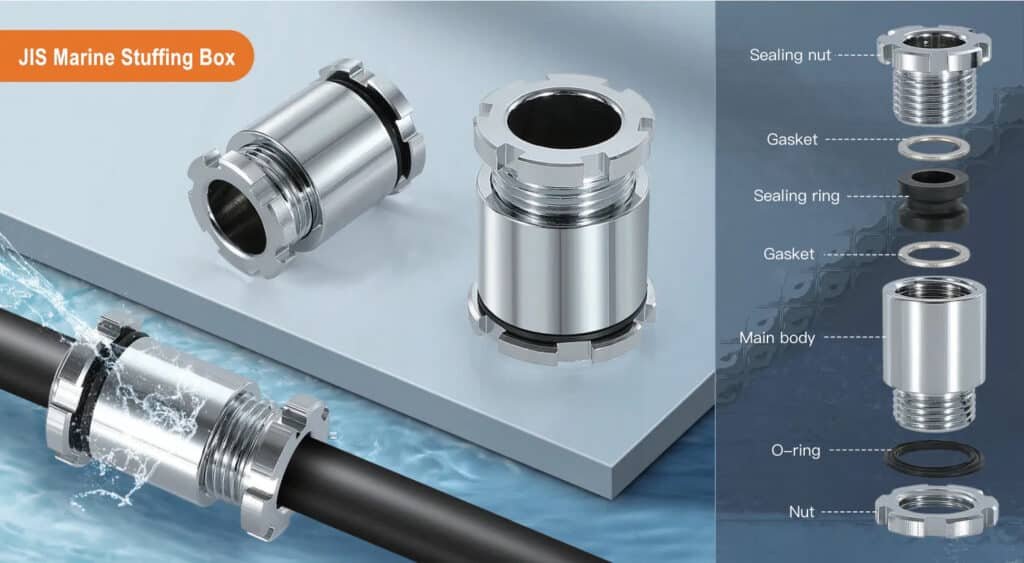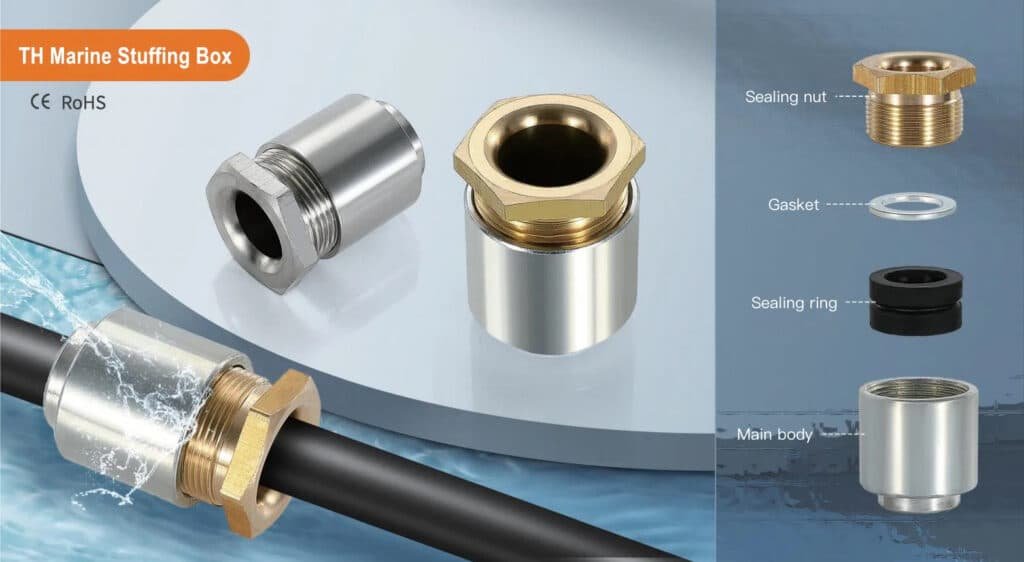When marine projects fail, millions are at stake. One wrong cable connection can sink your entire operation. But what if I told you there’s a proven solution? 😉
A specialized marine cable gland with proper IP68 rating1 and corrosion resistance can prevent 90% of marine electrical failures, saving projects from costly delays and safety hazards.
Last month, I received an urgent call from Hassan, a marine engineering contractor facing a potential $2 million loss. His story changed everything about how I approach marine cable solutions.
Table of Contents
- What Makes Marine Cable Glands Different from Standard Ones?
- How Do You Choose the Right Marine Cable Gland for Harsh Environments?
- What Certifications Must Marine Cable Glands Have for Safety Compliance?
- How Can Proper Installation Prevent Million-Dollar Marine Project Failures?
What Makes Marine Cable Glands Different from Standard Ones?
Hassan’s crisis started with a simple assumption: “All cable glands are the same, right?”
Marine cable glands feature specialized materials like 316L stainless steel, enhanced sealing systems, and superior corrosion resistance that standard glands simply cannot provide in saltwater environments.
The Critical Differences That Matter
When Hassan’s offshore platform experienced cable failures after just 3 months, we discovered the root cause immediately. Here’s what sets marine-grade cable glands apart:
| Feature | Standard Cable Gland | Marine Cable Gland |
|---|---|---|
| Material | Brass/Nylon | 316L Stainless Steel |
| Corrosion Resistance | Basic | Superior (1000+ hours salt spray test2) |
| Sealing Rating | IP65-IP67 | IP68/IP69K |
| Temperature Range | -20°C to +80°C | -40°C to +120°C |
| Vibration Resistance | Standard | Enhanced (marine shock tested) |
Real-World Impact: Hassan’s $2M Lesson
Hassan learned this the hard way. His team installed standard brass cable glands on a North Sea platform. Within 90 days:
- 15 cable connections failed due to corrosion
- Platform operations stopped for 2 weeks
- Emergency replacement costs exceeded $500,000
“Chuck, I wish I had called you first,” Hassan told me during our emergency consultation.
How Do You Choose the Right Marine Cable Gland for Harsh Environments?
Not all marine environments are created equal. What works in a Mediterranean yacht won’t survive Arctic drilling platforms.
Select marine cable glands based on specific environmental factors: salinity levels, temperature extremes, vibration intensity, and chemical exposure. Each factor determines material choice and sealing requirements.
The Bepto Marine Selection Matrix
After helping hundreds of marine projects, we’ve developed a systematic approach:
Step 1: Environmental Assessment
- Salinity Level: Coastal (low) vs. Open ocean (high)
- Temperature Range: Tropical vs. Arctic conditions
- Chemical Exposure: Fuel, hydraulic fluids, cleaning agents
- Mechanical Stress: Wave action, vibration, thermal cycling3
Step 2: Material Selection Guide
High Corrosion Environment → 316L Stainless Steel
Extreme Temperature → Hastelloy C-276
Chemical Resistance → PTFE/Viton Seals
Budget Conscious → Marine-Grade Brass with Nickel Plating
Step 3: Certification Requirements
For Hassan’s new project, we specified:
- DNV GL4 certification for offshore platforms
- IP68 rating for continuous submersion
- ATEX approval for explosive atmospheres
- UL listing for electrical safety
Customer Success: David’s Efficiency Approach
David, a procurement manager from a German shipyard, needed 500 cable glands delivered in 3 weeks. His approach was different:
“Chuck, I don’t have time for failures. Give me your most reliable marine solution with full documentation.”
We provided our MGS-20 series with complete material certificates, test reports, and installation guides. Result? Zero failures across 18 months of North Atlantic operations.
What Certifications Must Marine Cable Glands Have for Safety Compliance?
In marine engineering, the wrong certification can shut down your entire operation. I’ve seen projects delayed for months due to missing paperwork.
Marine cable glands require DNV GL, Lloyd’s Register, or ABS classification society approval, plus IP68/IP69K ratings and relevant explosion-proof certifications like ATEX or IECEx for hazardous areas.

The Certification Hierarchy
Mandatory Marine Certifications:
Classification Society Approval
– DNV GL (most common for offshore)
– Lloyd’s Register (traditional maritime)
– ABS (American Bureau of Shipping)Ingress Protection (IP) Ratings
– IP68: Continuous submersion protection
– IP69K5: High-pressure, high-temperature washdownExplosion Protection (if applicable)
– ATEX (European directive)
– IECEx (international standard)
– UL (North American markets)
Regional Compliance Requirements:
- Europe: CE marking + ATEX for hazardous areas
- North America: UL/CSA listing + NEC compliance
- Asia-Pacific: IECEx + local maritime authority approval
Hassan’s Certification Crisis (And How We Solved It)
Hassan’s original supplier provided cable glands with “marine-grade” labels but no actual certifications. When DNV GL inspectors arrived:
“These glands don’t meet our standards. Platform certification is suspended.”
Our Emergency Response:
- Express shipped certified MGS-316L glands within 48 hours
- Provided complete certification packages
- Coordinated with DNV GL for expedited approval
- Platform back online in 5 days vs. projected 6 weeks
“Bepto saved my contract and my reputation,” Hassan later testified.
How Can Proper Installation Prevent Million-Dollar Marine Project Failures?
Even the best marine cable gland fails without proper installation. I’ve investigated too many “product failures” that were actually installation errors.
Proper marine cable gland installation requires torque specifications, sealant application, and environmental protection measures that differ significantly from standard electrical installations.
The Bepto Marine Installation Protocol
Pre-Installation Checklist:
- Verify cable outer diameter matches gland range
- Confirm thread compatibility (metric vs. NPT)
- Check environmental sealing requirements
- Prepare proper tools and torque specifications
Critical Installation Steps:
Cable Preparation
– Strip outer jacket to exact specification
– Apply marine-grade cable lubricant
– Inspect for damage or contaminationGland Assembly
– Hand-tighten body to enclosure
– Apply specified torque (typically 25-35 Nm for M20)
– Install cable with proper strain reliefSealing Verification
– Pressure test at 1.5x operating pressure
– Visual inspection for proper compression
– Document installation parameters
Real-World Installation Failures (And Prevention)
Case 1: David’s Efficiency Challenge
David’s team installed 200 glands in one day. Result? 30% failure rate within 6 months.
Root Cause: Insufficient torque due to time pressure
Solution: We provided pneumatic torque tools and revised installation schedule
Case 2: Hassan’s Arctic Platform
Temperature cycling caused seal failures despite correct installation.
Root Cause: Standard EPDM seals inadequate for -40°C
Solution: Upgraded to Viton seals with thermal expansion compensation
Installation Support Services
At Bepto, we don’t just sell products. We ensure success:
- Technical Training: On-site installation workshops
- Documentation: Step-by-step installation guides
- Quality Assurance: Installation verification checklists
- Emergency Support: 24/7 technical hotline for critical projects
Conclusion
Marine cable gland selection isn’t just about products—it’s about preventing million-dollar failures through proper specification, certification, and installation expertise.
FAQs About Marine Cable Glands
Q: What’s the difference between IP68 and IP69K ratings for marine applications?
A: IP68 protects against continuous submersion under specified pressure, while IP69K adds protection against high-pressure, high-temperature washdown cleaning. Marine environments typically require IP68 minimum, with IP69K for areas subject to pressure washing.
Q: How long do marine cable glands typically last in saltwater environments?
A: Quality marine cable glands with 316L stainless steel construction last 15-20 years in normal saltwater exposure. Lifespan depends on maintenance, environmental severity, and proper installation.
Q: Can I use standard cable glands with marine-grade sealant instead of marine cable glands?
A: No. Marine environments require specialized materials, enhanced sealing systems, and corrosion-resistant construction that standard glands cannot provide regardless of sealant upgrades.
Q: What certifications are required for offshore oil platform cable glands?
A: Offshore platforms typically require DNV GL or similar classification society approval, IP68 rating, ATEX certification for hazardous areas, and compliance with local maritime regulations.
Q: How do I calculate the correct torque specification for marine cable gland installation?
A: Torque specifications vary by gland size and material. Generally, M20 stainless steel glands require 25-35 Nm. Always consult manufacturer specifications and use calibrated torque tools for critical applications.
-
Review the official International Electrotechnical Commission (IEC) standard that defines the IP code for Ingress Protection ratings. ↩
-
Learn about the methodology and requirements of the ASTM B117 salt spray test for evaluating corrosion resistance. ↩
-
Understand how repeated temperature changes can cause material fatigue and failure in mechanical seals and joints. ↩
-
Explore the role of DNV, a global classification society, in setting standards for the maritime and energy industries. ↩
-
Discover the specific test requirements for the IP69K rating, designed for protection against high-pressure, high-temperature washdowns. ↩




